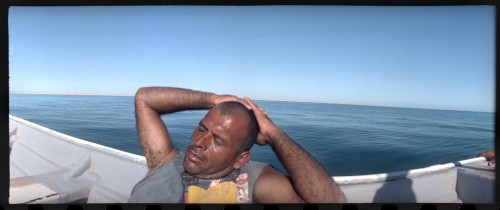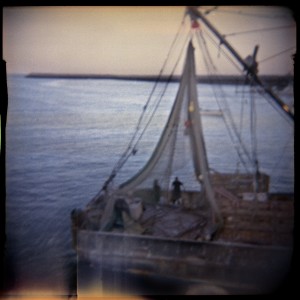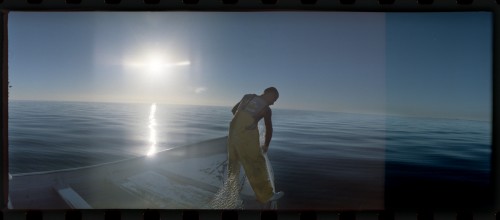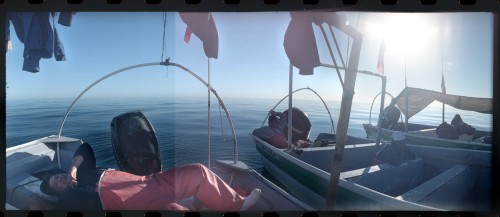http://www.lastwordonnothing.com/2013/08/07/a-tiny-dolphin-and-a-big-problem/
A Tiny Dolphin and a Big Problem
By Erik Vance | August 7, 2013
The following is an essay I wrote while reporting from the Sea of Cortez last fall. To learn more, read my piece in this month’s Harper’s Magazine: “Emptying the World’s Aquarium.”
Over the past few days I have found myself thinking a lot about the tragic poem “The Rime of the Ancient Mariner.” In it, the narrator kills an albatross and brings on the wrath of the ocean – bad weather, ghost ships, and whirlpools. It’s a transfixing tale of willful destruction followed by forgiveness and redemption. One particular quote keeps popping to mind.
He prayeth well, who loveth well / Both man and bird and beast.
He prayeth best, who loveth best / All things both great and small
Here in the Upper Gulf of California, fishermen, governments, and environmentalists have been struggling with a different kind of albatross – not one that soars high on the wind but rather lurks unseen in the murky water. But when the fishermen pull it into their nets, it’s an omen just as bad as that legendary bird.
Their albatross is the Mexican porpoise, more often called the vaquita (little cow). It’s a small, shy animal – four or five feet long with a blunt nose and rarely glimpsed even by the most determined scientist. They poke silently about, unique to just the very top slice of the Sea of Cortez, growing slowly, reproducing infrequently, and wandering into fishing nets. In short, it’s the kind of creature that seems almost designed to go extinct.
In the past few decades, the vaquita has become the Gulf’s spotted owl – a quiet spokesman for conservation in the region. After NAFTA was signed, its environmental wing (the Commission for Environmental Cooperation) and the Mexican government decided that saving the vaquita was priority number one. In 1994, Mexico created a massive reserve covering the entire Upper Gulf to protect the vaquita and in 2004 another area within that as a specific vaquita reserve.

Ever since the Chinese river dolphin went extinct in 2006, the vaquita has held the dubious title of “world’s most endangered marine mammal.” It’s not clear how many vaquita are left in the world. They were probably never common like their more congenial cousin the harbor porpoise but for the past 50 years as US demand for fish and shrimp exploded and the Colorado River dried up, the tiny population has crashed. Some estimates (mostly considered to be outdated) are as high as 500 but estimates go as low as 150, which would put them in grave danger of serious inbreeding problems in the future. The most recent comprehensive study four years ago put it at just 220 lonely creatures.
Fishermen by nature are not crazy about dramatic changes or outside intervention. When PROFEPA, Mexico’s fishery enforcement wing, moved in to try and enforce the reserve by fining poachers or checking permits in the 90s, their cars got torched. So to save the vaquita, the government tried some carrots instead. They cut back the giant trawlers, hated by local fishermen, and offered to push out all the outsiders so that locals fortunate enough to own a permit could have the fishing grounds to themselves.
Yet still the vaquita disappeared. So in 2008, they offered to buy out any fishermen or pay them to switch their shrimping gear to a dolphin-safe version. The payouts were generous – $25,000 or so each – as long as they spent it on building tourism businesses in the area, like hotels and seafood restaurants.
This should have been the happy ending of the story. Except that this is the Upper Gulf, not Cancun. Tourism is limited to a few Arizonans wearing “I’m with stupid” T-shirts who bounce down the dunes in their ATVs. Furthermore, not many fishermen know anything about hotels and restaurants (which are plentiful here, but oddly no fishing tours). Four years on, most of those businesses have failed.

As for the dolphin-safe nets, they do indeed spare the dolphins – and unfortunately the shrimp too. According to the government, the new nets (big scoopy things, in contrast to wall-like, filamentous gill nets) catch more than 220 pounds of shrimp per day – a really good haul. But I talked to fishermen who helped in that study and they said the dolphin-safe nets couldn’t catch enough shrimp for a dinner plate. But they were asked to write those numbers in pencil so that the researchers could change the numbers later.
Ask a fisherman today what he thinks of the vaquita and you are going to get an earful. Most who have followed government or NGO advice have either gone broke. Worse, you can’t have “vaquita tours” for rich Americans or see them frolicking from the beach since they’re shy and virtually invisible in their murky water (one fisherman told me his friends think outsiders made up the dolphin).
So in the end we have a story without any bad guys but one really tough decision. The fishermen have begrudgingly complied with the regulations but they haven’t really worked. The Mexican government – not known for its conservation prowess in other places – seems to have put in a genuine effort of money and time to solve this problem. The NGOs have done what NGOs do – try and save a charismatic species on the brink of extinction.
All that’s left is a question – one that will come up again, I promise you. When is it time to let a species go? Without local buy-in, conservation never really works. I mean, no one here wants anything to do with vaquitas and fishermen tell me if they find a dead one in their net, they just quietly slip it back in the water. It may be that in order to bring fishermen on board to help save other species in the Sea of Cortez, we have to let this one go. For people dedicated to saving the vaquita, like the ancient mariner, it’s been a journey filled with hard lessons.
He went like one that hath been stunned / And is of sense forlorn:
A sadder and a wiser man / He rose the morrow morn.
All photos of Upper Gulf fishermen courtesy of Dominic Bracco II
Reporting and travel supported in part by The Pulitzer Center on Crisis Reporting

